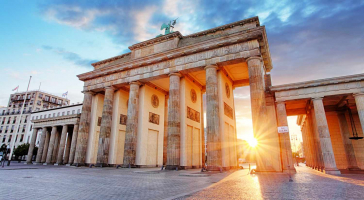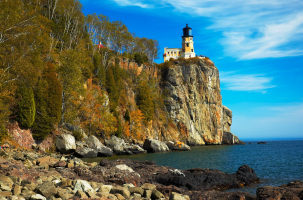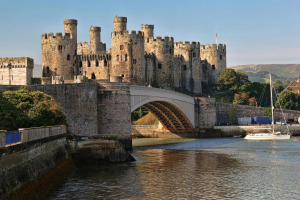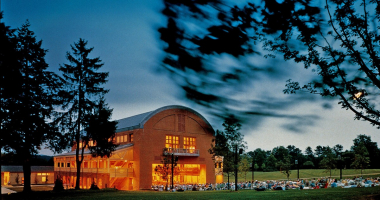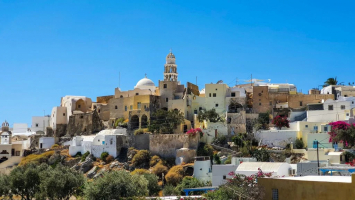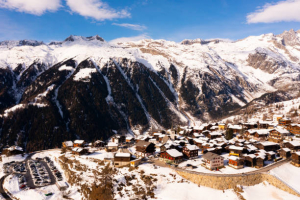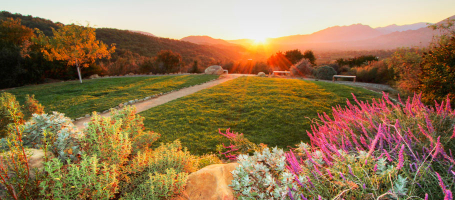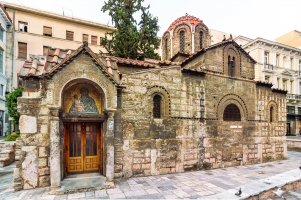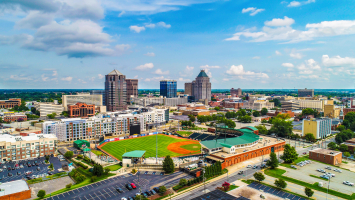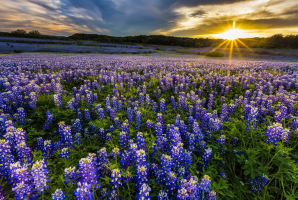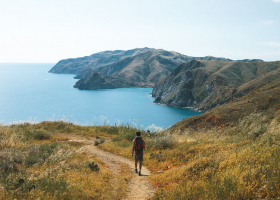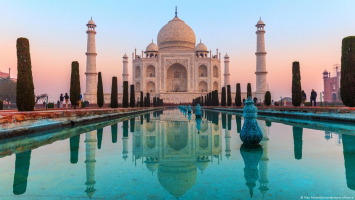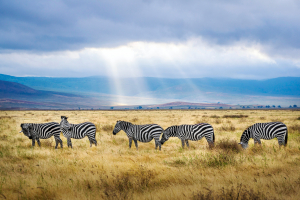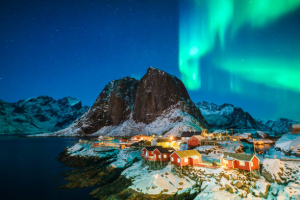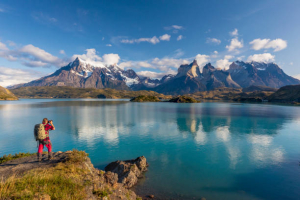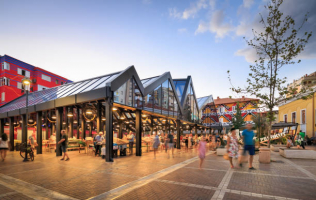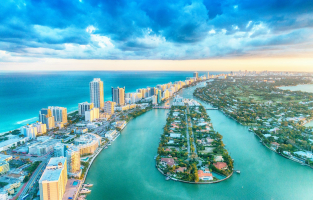Top 12 Best Things to Do in Italy
You're thinking of going to Italy for your next vacation and want to know where to go? Excellent pick! there are many wonderful sights to see in the nation; ... read more...you will like it! Italy is one of Europe's most popular tourist destinations, with numerous magnificent towns, a rich history, breathtaking scenery, some of the most attractive Mediterranean islands, and, of course, wonderful food. Let's explore the best things to do in Italy now.
-
Italy's capital city is Rome. It is also the capital of the Lazio region, the administrative center of Rome, and a unique comune known as Comune di Roma Capitale. Rome is often regarded as the "cradle of Western civilisation and Christian culture", as well as the seat of the Catholic Church. With 8.6 million tourists in 2019, Rome was the 14th most visited city in the world, the third most visited in the European Union, and the most popular tourist attraction in Italy. UNESCO has designated its historic center as a World Heritage Site. The presence of renowned international brands in the city has made Rome an important centre of fashion and design, and the Cinecittà Studios have been the set of many Academy Award–winning movies.
One alternative is to zoom about Italy's Eternal City on the back of a Vespa scooter, which is a terrific way to experience the dolce vita (good life). There's history and culture at every turn, from the Colosseum (purchase a "Full Experience" ticket to explore the underground vaults) to the Pantheon and the Roman Forum to Michelangelo's Sistine Chapel and the Vatican Museums. There's simply too much to see in a one visit, so before you go, drop a coin into the pool beneath the Trevi Fountain's wild horses and cascading rockfalls to assure a repeat visit to this enthralling city.
Location: Rome, Lazio, Italy
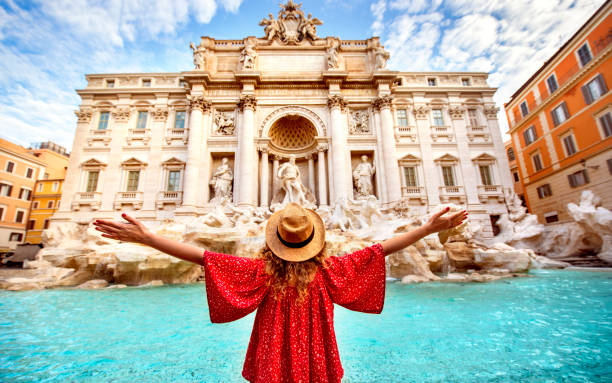
istockphoto 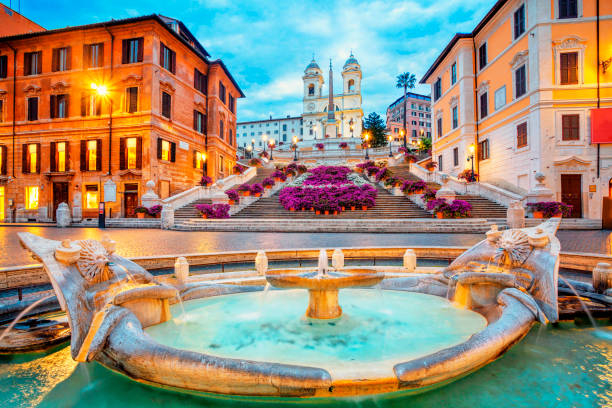
istockphoto -
The Valley of the Temples is a Sicilian archaeological site with an excellent state of preservation and a sequence of Doric temples. It relates to the city's original massive "Akragas" nucleus. The entire area has been designated as a UNESCO World Heritage Site and is a popular tourist site, as well as the city's emblem and one of the most important on the island. One of the finest aspects of the temples here is that they overlook the town below, allowing you to take in the breathtaking views while touring the ancient monument.
The Valley of the Temples is distinguished by the remnants of twelve Doric temples, three sanctuaries, a dense concentration of necropolis, hydraulic works, fortifications, and two prominent gathering places: the lower Agora and the upper Agora, as well as an Olympeion and a Bouleuterion (council chamber). The Valley of the Temples also houses the so-called tomb of Terone, a large monument in the shape of a pyramid that was constructed to memorialize the dead of the Second Punic War. The archaeological area is one of the most beautiful in Italy today, and it is a regional archaeological park, the first in the nation to have a sustainability report, which confirms not only its social and cultural dedication, but also its environmental commitment.
Location: Panoramica dei Templi Street, 92100 Agrigento (Agrigento)
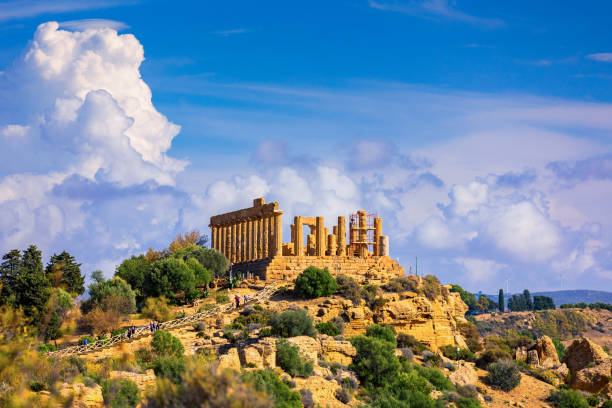
istockphoto 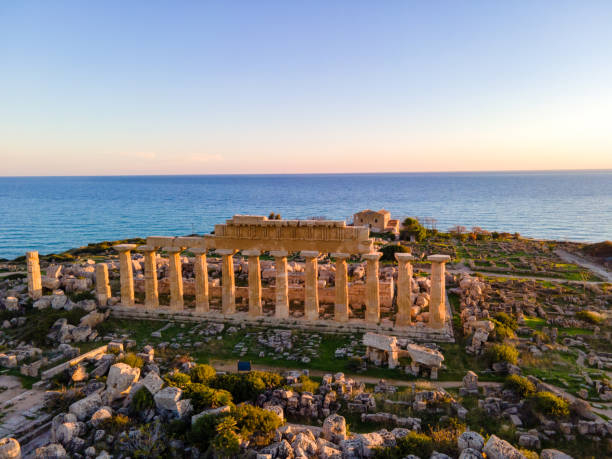
istockphoto -
Mount Vesuvius is one of the most well-known mountains in the world, not least because of its legendary eruption, which engulfed the unwary town of Pompeii in volcanic ash. What we call "Vesuvius" is actually the younger component of the mountain complex known as "Greater Vesuvius" by geologists. Monte Somma refers to the oldest section of the mountain, which is now an extinct volcano. Before the 79 AD explosion, a painting unearthed from Pompeii depicts a solitary summit and the considerably higher Monte Somma covered in vegetation.
Buses may transport guests to within 200 meters of Vesuvius's top. There, you may purchase a ticket to the summit as well as drinks, souvenirs, and even apparel. Remember that the peak can be significantly colder, especially when there are low clouds. After purchasing your ticket, you will ascend on a wide path of volcanic stone pocked with bigger pebbles. Staunch shoes are advised. The route loops back numerous times before around the crater. There are restrooms at the peak at an intermediate point along the hike. You may hire a tour, buy a guidebook, or simply peer into the crater on your own at the peak. Nowadays Vesuvius is mostly considered safe to climb and you can trek to the crater of the mountain which looks like something you would find on the surface of the moon.
Location: Via Palazzo del Principe, 80044 Ottaviano (NA)

istockphoto 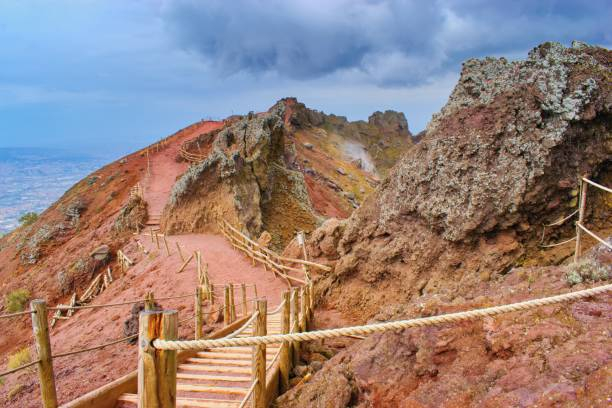
istockphoto -
The Cinque Terre is a seaside region in Liguria in northwest Italy. Cinque Terre is a UNESCO World Heritage Site that is also a national park. The 'Five Lands', located in Liguria, is made up of five different communities perched on jagged cliffs overlooking the famed Italian Riviera. The Cinque Terre region is a well-known tourist attraction. People have built terraces on the rough, steep topography for generations, all the way up to the cliffs that overlook the Ligurian Sea. Paths, trains, and boats connect the communities because automobiles can only access them from the outside through narrow and perilous mountain routes.
Cinque Terre is difficult to reach by vehicle. The route to Vernazza is quite narrow and terminates 1 kilometer (0.62 mi) before the village. Trains connect La Spezia to all five Cinque Terre villages, as well as key regional and national attractions. The Cinque Terre train stations are on the Genoa-Pisa route. Because most long-distance trains do not stop in all five Cinque Terre villages, visitors must transfer from La Spezia to regional trains. Some intercity trains stop at Monterosso Station as well. Many walking paths run throughout the park and are labeled using the SVA numbering system; yet it is common to hear trails referred to by their prior numbers, which causes tourists confusion.
Location: Riomaggiore to Monterroso Cinque Terre
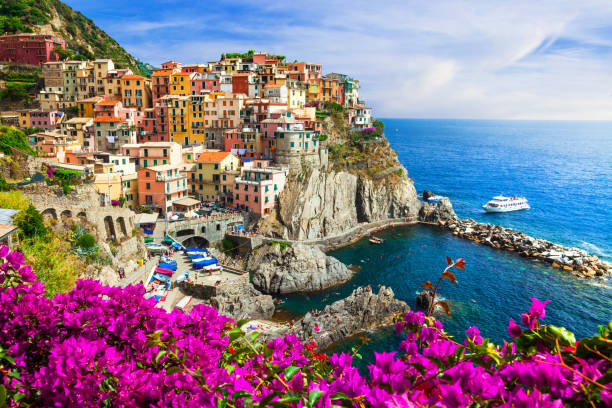
istockphoto 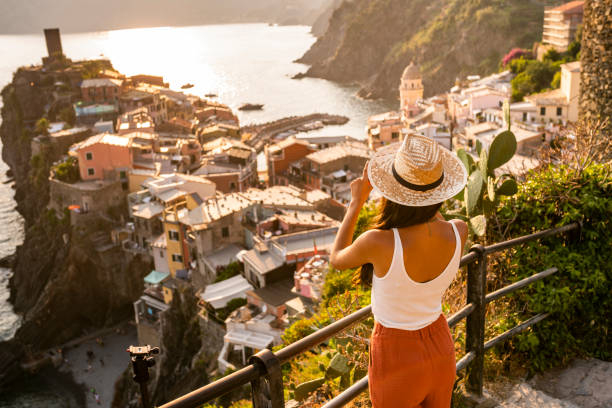
istockphoto -
Lake Como, commonly known as Lario, is Italy's third biggest lake (after Lake Garda and Lake Maggiore). Lake Como, located at the foot of the Alps, has some of the most charming and magnificent scenery in the world. Its distinctive form, like an inverted Y, is the result of glacial melting mixed with the erosive movement of the old Adda river. This resulted in the construction of the two southern branches, which end in the cities of Como and Lecco, with the famed Bellagio in the center. The distances between cities are short enough that you may visit at least three or four villages by taking local transportation, and you can lose yourself amid lovely homes and gardens, relax with a private boat trip or on your favorite beach, and even refresh with a healthy nature walk.
Lake Como covers an incredible 146 square kilometers and is the ideal location for getting out on the lake and seeing Italy by boat. The region around Lake Como is home to some of the world's wealthiest celebrities, which tells you all you need to know about the sights you can anticipate. The surrounding scenery is surrounded with alpine wilderness, medieval towns, and exquisite, beautiful residences that make you feel like you're in a picture postcard rendition of an Italian masterpiece. You'll be astonished at how many activities to do around Lake Como there are, especially if you stay for more than one day!
Location: Piazza Cavour, Como
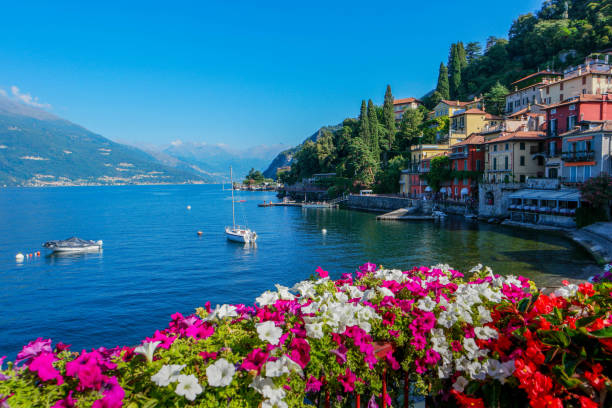
istockphoto 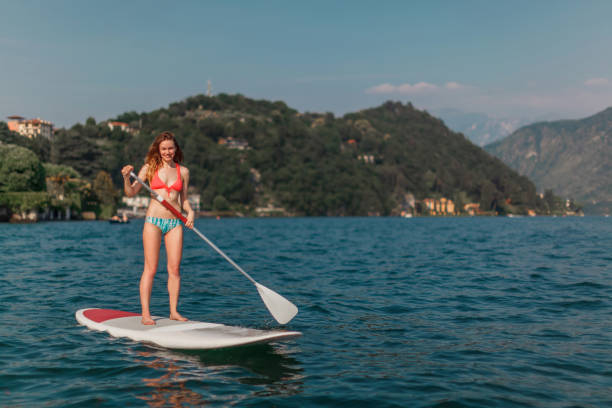
istockphoto -
The Uffizi Gallery is a major art museum in Florence, Tuscany, Italy, near to the Piazza della Signoria. It is one of the most significant and frequented museums in Italy, as well as one of the largest and best renowned in the world, and it has a collection of priceless artifacts, mainly from the Italian Renaissance period. The Uffizi was one of the earliest modern museums. The gallery has been available to visitors on request since the sixteenth century, and in 1765 it was officially opened to the public, becoming a museum in 1865.
Waiting times might reach five hours during peak season (especially in July). To considerably shorten the waiting time, tickets are available online in advance. A new ticketing system is being tried to minimize wait times from hours to minutes. Anyone visiting Florence should not pass up the opportunity to visit one of the world's most famous galleries. The paintings of Italian greats such as Leonardo da Vinci, Raphael, Michelangelo, and Caravaggio are shown in one of Italy's most beautiful structures, the Palazzo degli Uffizi. The palace overlooks the magnificent Arno River and is a must-see for every art enthusiast.
Location: Uffizi Square 6, 50122 Florence
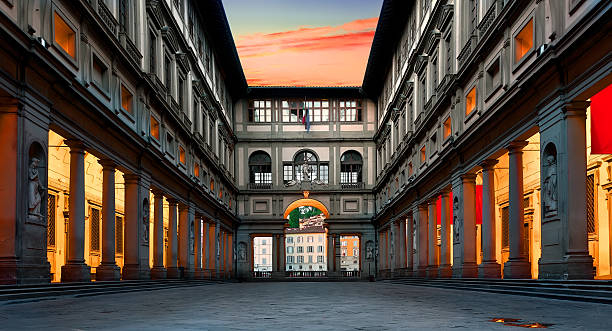
istockphoto 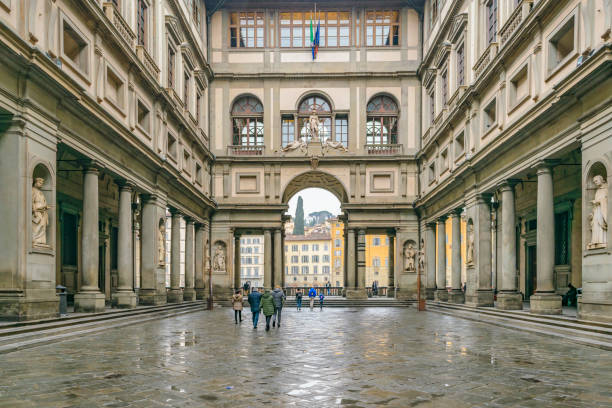
istockphoto -
Despite the fact that Juliet Capulet is a fictitious figure invented by Shakespeare, millions of people revere her as a love goddess. Every year, travelers from all over the world go to Verona to view the balcony where her Romeo wooed Juliet. In actuality, the structure dates from the 12th century. The mansion was bought by the City of Verona in 1905. The balcony belongs to the aptly called La Casa di Giulietta, or House of Juliet, the Cappello family's previous house and the inspiration for the Capulets. Couples in love linger in the garden, pose for photos on the balcony, or hang notes loaded with sweet nothings on the walls.
Many people touch the bronze statue of Juliet for good luck, which has developed a patina. Many individuals also leave their mark on the walls with graffiti and chewing gum, with some of the blobs forming crude hearts. Nonetheless, the balcony is a lovely site in the city, and couples gather here to profess their love beneath the famed structure.
Location: Verona, Italy
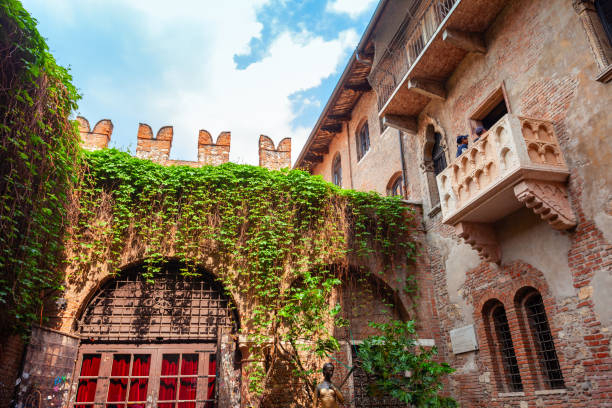
istockphoto 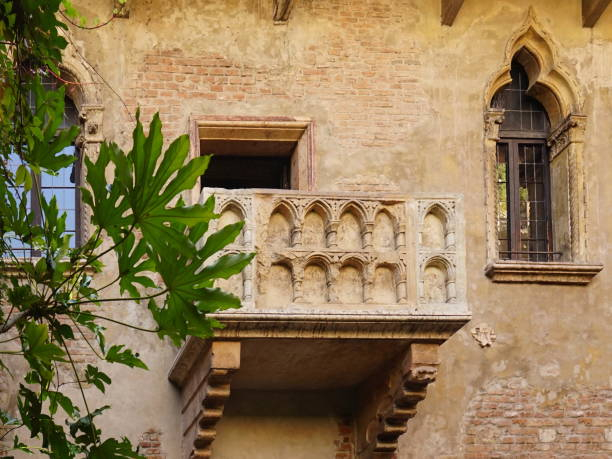
istockphoto -
You can't visit Rome without seeing one of the world's most iconic sights, the magnificent Coliseum. The Colosseum is an oval amphitheatre located in Rome, Italy, immediately east of the Roman Forum. It is the biggest ancient amphitheatre ever erected and, despite its antiquity, the largest standing amphitheatre in the world today. Travertine limestone, tuff (volcanic rock), and brick-faced concrete were used to construct the Colosseum. In the early medieval period, the edifice was no longer utilized for entertainment. It was eventually used for houses, workshops, religious order apartments, a castle, a quarry, and a Christian shrine.
Despite being significantly damaged by earthquakes and stone robbers stealing spolia, the Colosseum remains an iconic emblem of Imperial Rome and was named one of the New 7 Wonders of the World. It is one of Rome's most prominent tourist sites, and it also has connections to the Roman Catholic Church, as the Pope leads a torchlit "Way of the Cross" procession that begins in the region around the Colosseum every Good Friday. The Colosseum is portrayed on the five-cent euro coin in Italy. The amphitheater is most renowned for the gladiator contests that used to take place here, and you may sit in the stands and envision the brutal shows that used to take place here for the entertainment of the audience.
Location: Piazza del Colosseo 1, Rome, Lazio 00184
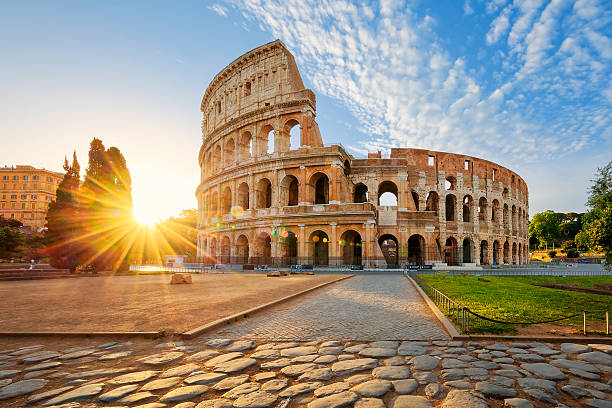
istockphoto 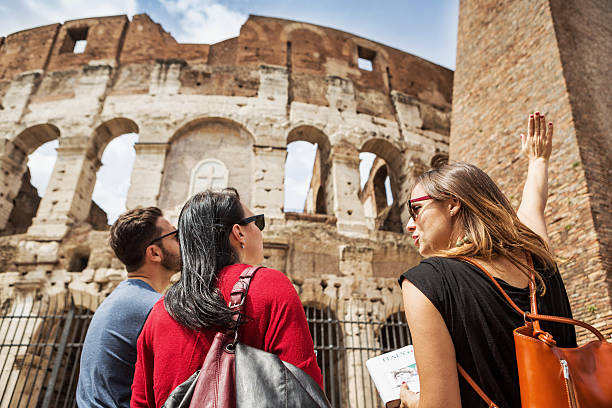
istockphoto -
Pompeii is notable for what happened here in 79 ADS, when Mount Vesuvius erupted and smothered the town in ash. The eruption seized and frozen Roman life in time, and when the site was excavated, it provided a picture of a bygone civilization. Pompeii was an ancient city in what is today the comune of Pompei, near Naples in Italy's Campania region. If you visit Pompeii today, you can anticipate an open-air museum with intact houses, baths, and old Roman forums, all packed with the artifacts of the people who lived there at the time of the eruption.
The unearthed city provided a rare picture of Roman society, frozen at the moment it was buried, while much of the specific evidence of its residents' ordinary lives was destroyed in the excavations. With a population of over 11,000 in AD 79, it was a prosperous town with numerous beautiful public structures and sumptuous private dwellings with expensive decorations, furniture, and pieces of art that were the major attractions for the early excavators. The ash included organic remnants, including wooden artifacts and human bodies.
Pompeii is a UNESCO World Heritage Site and one of Italy's most famous tourist destinations, with around 2.5 million tourists each year. Following a series of excavations before to 1960 that disclosed the majority of the city but left it in disrepair, additional big excavations were prohibited or restricted to certain, prioritized sections. This resulted in new discoveries in hitherto undiscovered sections of the city in 2018.
Location: Pompei, Metropolitan City of Naples
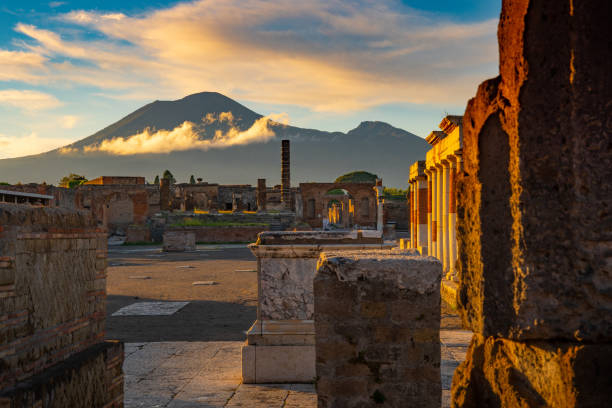
istockphoto 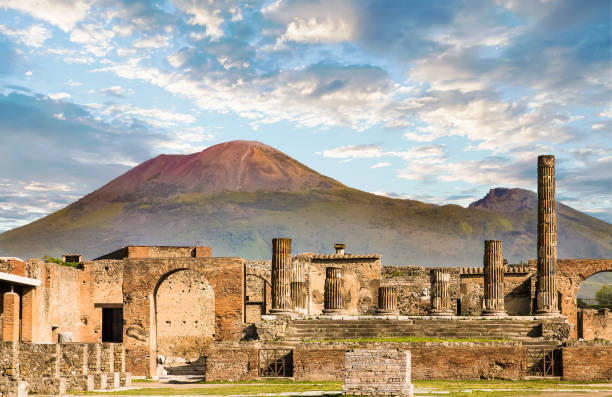
istockphoto -
The stunning Amalfi Coast is one of Italy's most picturesque destinations, and if you want to see as much of it as possible in the shortest period of time, try taking a boat excursion around the coast. The Amalfi Coast is a section of southern Italian coastline that overlooks the Tyrrhenian Sea and the Gulf of Salerno. It is situated between the Sorrentine Peninsula and the Cilentan Coast. The Coast is called for the town of Amalfi, which serves as its major historical and political center and is recognized across the globe for its Mediterranean environment and natural richness.
It is a favorite jet set destination that has captivated upper-class Europeans since the 18th century, when it was a frequent halt on their Grand Tours. The Amalfi Coast was designated a UNESCO World Heritage Site in 1997, attracting foreign tourists of all income levels. A lot of firms hire boats, and you may see sites like the majestic Lattari Mountains and several beautiful bays and inlets. Traditional Mediterranean towns may appear seemingly out of nowhere, and boat trips normally include food and beverages so you can graze on local delicacies while taking in the sights.
Location: Via Lorenzo d'Amalfi, Amalfi, Campania 84011
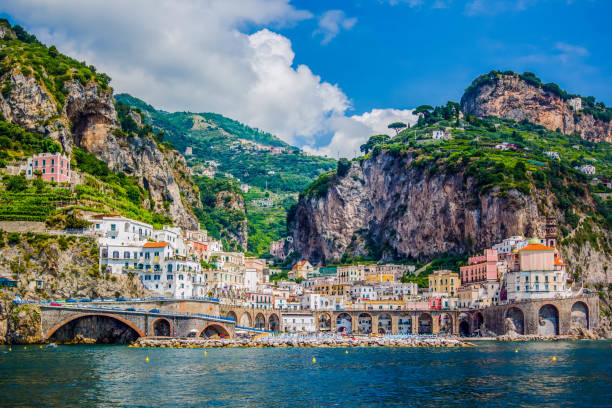
istockphoto 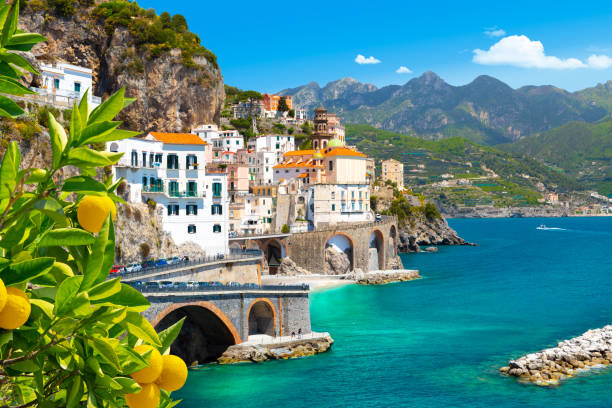
istockphoto -
If you want to get lost in a city's meandering alleyways and steps surrounded by luscious vineyards, Siena is the place to be. The gothic romanticism of this ancient city has been zealously safeguarded throughout the years, and visiting Siena is like going back in time in some respects. Numerous structures and works of art were added to the natural beauty of the city between the 12th and 15th centuries, which has been on UNESCO's World Heritage List since 1995. Siena, a city that rivals Florence in terms of urban planning, is a sight to see and a must-see for anybody visiting Tuscany.
A journey to Siena would be incomplete without taking in the splendor of the Cathedral, one of Italy's best-known specimens of Gothic architecture. The cathedral's construction began in the 12th century, and the façade was finished by 1380. The Duomo was intended to be the world's biggest cathedral, but once the transept and east wall were completed, a shortage of funding prevented that aim from being realized.
Among the several pieces of art found here, the most renowned are Guido da Siena's The Votive Madonna, Fra Giovanni da Verona's wooden choral bench, and Nicola Pisano's marble bergamot. Then there are the works of Pinturicchio, Donatello, and Neroccio in the Chapel of San Giovanni Battista, and the Piccolomini Library, which is a collection of Pius II's library, in the first span of the nave on the left.
Location: Piazza Del Campo, 53100 Siena (SI)
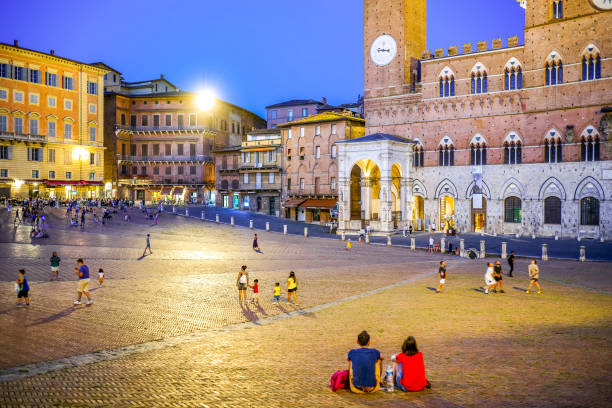
istockphoto 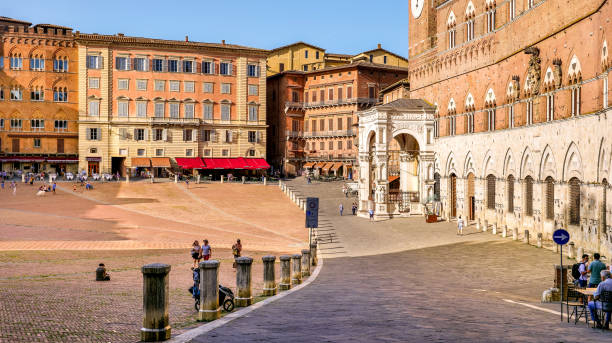
istockphoto -
Although Vatican City is technically its own state inside Italy, you can only enter this landlocked region by first traveling to Rome. If you're in the area, you should surely stop by one of the world's most prominent religious sites, which is home to powerhouses like the Piazza San Pietro and St. Peter's Basilica. According to Catholic belief, it was created in the first century by Saints Peter and Paul and, through Petrine and Papal primacy, serves as the focal point of complete communion for Catholic Christians worldwide.
The Vatican City economy is sustained financially by gifts from the devout, the selling of postal stamps and souvenirs, museum entry fees, and the sale of publications. There are no taxes in Vatican City, and all purchases are duty-free. If you're in the area, you should surely stop by one of the world's most prominent religious sites, which is home to powerhouses like the Piazza San Pietro and St. Peter's Basilica. You can also take in the majesty of the Vatican Palace as well as the Sistine Chapel which features the Creation of Adam.
Location: West bank of the Tiber River
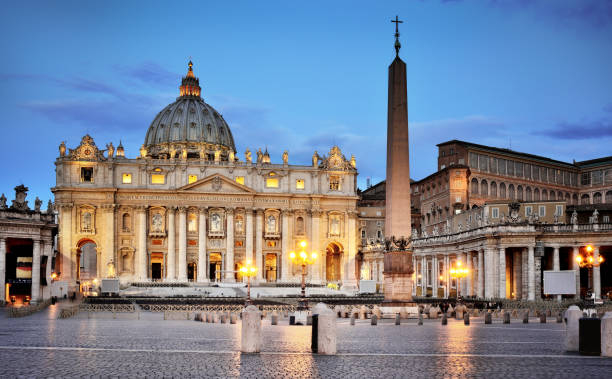
istockphoto 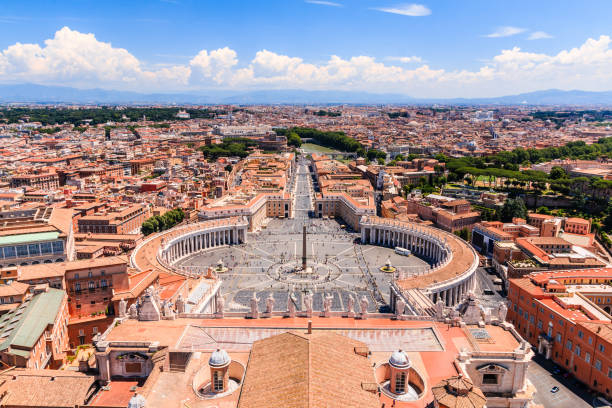
istockphoto














